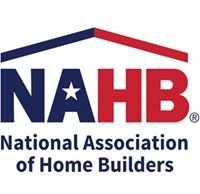WASHINGTON, D.C. – December 23, 2010 – (RealEstateRama) — The National Association of Home Builders (NAHB) applauds the Occupational Safety and Health Administration’s (OSHA) decision to withdraw the interim fall protection guidelines for residential construction that were issued in 1995 and revert to the previous guidelines.“Job site safety is the number one priority for builders,” said NAHB Chairman Bob Jones, a home builder from Bloomfield Hills, Mich. “This action will clarify what actions builders need to take to comply with OSHA regulations while helping to ensure safer work sites.”
The interim guideline, intended as a temporary policy, was implemented in 1995 to allow employers to use alternative measures for fall protection without having to provide a written, site-specific fall-protection plan or prove that conventional fall-protection systems were not feasible for a particular project. Prior to 1995, OSHA required builders to provide conventional fall protection (i.e., guardrail systems, personal fall-arrest systems or safety-net systems) for workers engaged in residential construction working six feet or more above a lower level. If an employer determined that using conventional fall-protection methods was not feasible or would create a greater hazard, the employer had to provide a written fall-protection plan utilizing alternative fall protection methods. OSHA’s new compliance directive (STD 03-11-002) eliminates the interim guideline and reverts back to the pre-1995 regulation.
In a 2008 letter, NAHB requested that OSHA rescind the interim guideline as it created confusion about fall protection requirements for residential construction. The new directive (STD 03–11–002) will require employers to comply with 29 CFR 1926.501(b)(13), which will “eliminate confusion in the residential construction industry as to which fall-protection methods and systems must be used and would make compliance with OSHA fall-protection requirements for the home building industry much simpler and easier to understand, as well as put into practice” according to the letter. The guideline still provides flexibility for employers by allowing them to implement a written fall-protection plan if they determine that conventional systems are not feasible or create a greater hazard to workers.
OSHA’s Advisory Committee on Construction Safety and Health and the Occupational Safety and Health State Plan Association also supported rescinding the interim guideline.
Construction and roofing companies have until June 16, 2011 to comply with the new directive.
For more information on complying with fall protection regulations and training materials, visit www.nahb.org/fallprotection.







